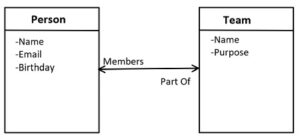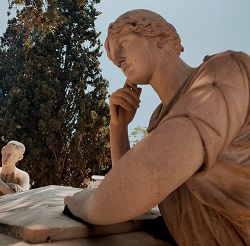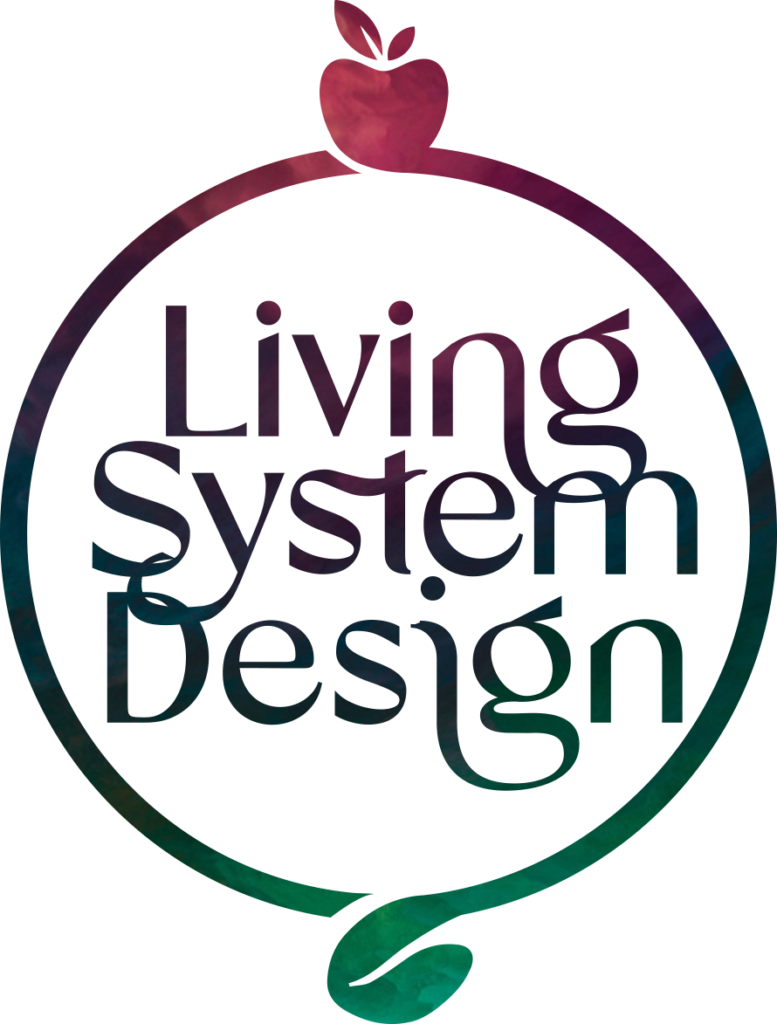
Living System Design
Nature builds stable, adaptable and thriving eco-systems, human activity screw them up.
What would the human eco-system look like if we adopted the values and principles used by nature?
Start With Your Why
This model is my attempt to articulate the values and principles used in natural systems and then apply them to the human societal structures we’re building. It is rooted in the observation, when separated from human intervention, nature builds stable, adaptable, thriving eco-systems. I believe the future of the human race must be tied to embodying these fundamental values and principles, then applying them to the human eco-system.
 As a system engineer for 30 years I watched the emergence of a new technology, computers, as it came to dominant our society. As a computer programmer I started my career using punch cards and finished working in the cloud. During that time the industry went through several fundamental changes. To move forward it was important to identify and challenge the assumptions from the old system. I learned some valuable techniques which I will describe first, then I’ll explain how they helped in my software development before applying them to what I’m calling Living System Design.
As a system engineer for 30 years I watched the emergence of a new technology, computers, as it came to dominant our society. As a computer programmer I started my career using punch cards and finished working in the cloud. During that time the industry went through several fundamental changes. To move forward it was important to identify and challenge the assumptions from the old system. I learned some valuable techniques which I will describe first, then I’ll explain how they helped in my software development before applying them to what I’m calling Living System Design.
Related Posts
Cycle of Regeneration
Upgrading the Operating System
 Our current human operating system of Corporations, Capitalism and Democracy are the equivalent of the DOS operating system from the 70s. They are rigid and fixed in their structure, are focused on generating profit over improving the quality of our lives and allow the majority to oppress the minority, sometimes the minority is right. In a world of innovation we must examine these systems, move forward with what works and replace what doesn’t.
Our current human operating system of Corporations, Capitalism and Democracy are the equivalent of the DOS operating system from the 70s. They are rigid and fixed in their structure, are focused on generating profit over improving the quality of our lives and allow the majority to oppress the minority, sometimes the minority is right. In a world of innovation we must examine these systems, move forward with what works and replace what doesn’t.
Typical corporate structures are no different than a feudal system, with the CEO (king), the managers (aristocrats) and the workers (peasants). They are run by top down command and control, ignoring those who are on the front lines of any activity. Our governance systems have mimicked this structure and are deeply steeped in bureaucracy, nepotism and conflicts of interest. DOS it meet our needs?
Capitalism is rooted in market places based on supply and demand, valuing scarcity over sufficiency. It focuses on producing surplus over meeting needs, increasing efficiency by allowing costs to be externalized and wasteful practices to thrive, it makes capital more important than people. This all measured by something called Gross Domestic Product, the value of all goods and services. Do we really want a society where the costs of natural disasters, sickness and war are part of indicating a healthy economy? DOS it offer a true measure?
 Its time to slay the holy cow of Democracy? Winston Churchill once said “democracy is the worst form of Government except for all those other forms that have been tried…” Our current government is mired in conflict by special interests, driven by corporate needs over human needs. Is this really the best we can do? We are infinitely creative, is there a better form of governance? Maybe we should be asking what is the role of government? Should a small group be empowered to dictate how we as individuals live our lives? DOS it honor our sovereignty?
Its time to slay the holy cow of Democracy? Winston Churchill once said “democracy is the worst form of Government except for all those other forms that have been tried…” Our current government is mired in conflict by special interests, driven by corporate needs over human needs. Is this really the best we can do? We are infinitely creative, is there a better form of governance? Maybe we should be asking what is the role of government? Should a small group be empowered to dictate how we as individuals live our lives? DOS it honor our sovereignty?
In about 70 years the operating system for our modern computers has evolved from large bulky systems filling a room to something small enough to carry in our hand or wear around our wrist. Our social systems are the equivalent of those bulky monstrosities, bloated, inefficient and wasting time and energy.
It’s time for an upgrade!
Using a Meta Framework
As a software engineer I was part of a field that went from punch cards to the cloud. Seeing how each progression offered more capability and solved problems from the previous paradigm. If I’m offering a system upgrade, I think it’s important to understand the experience on which this model has been developed. It is rooted in my activities and what has worked for me on successful software development projects, using what is called Object Oriented techniques. Object Oriented programming is founded on the concepts of a Class, an Attribute/Relationship and a Method.
 A Class is an encapsulation of content, or more simply it’s a boundary. There are things within the boundary and things that are excluded. What is included or excluded is determined by the purpose of the Class. For example, we can imagine the idea of a person is part of a team. The system would require two Classses, person and team. Each Class defines a scope of information and connection.
A Class is an encapsulation of content, or more simply it’s a boundary. There are things within the boundary and things that are excluded. What is included or excluded is determined by the purpose of the Class. For example, we can imagine the idea of a person is part of a team. The system would require two Classses, person and team. Each Class defines a scope of information and connection.
Attributes/Relationships are the content stored in a Class, they are information, again driven by purpose. Attributes are basic information, a date, a time, a name, etc.
Relationships are a special type of information, they represent connections (i.e. references) to other Classes. They capture the connection and pathways in which two Classes interact. What makes them powerful is they can be a collection, more than 1 connection, and are bi-directional, traversed in either direction. For our person Class we have simple Attributes name (text), email (text), birthday (date) and a Relationship to the team Class. This Relationship captures all the teams to which Person belongs. Similarly there is a Relationship on the team Class which represents all it’s members. It will also have it’s own attributes name (text), purpose (text).
Methods are the behavior, they represent the dynamic processes that define the system, again determined by purpose. They provide the mechanism by which the outside world interacts with the system and the system provides output to the world. Some Methods are basic, creation, data updates, deletion. Others are more specialized based on the needs of the system. You can imagine we have Methods to send a message to person or a team. There is another method to add or remove a person from a team. How about a Method that produces a report of team members.
 Here is how this might be represented visually…
Here is how this might be represented visually…
This simple framework and other concepts that I’m not covering provide a generalized way of describing any system. Think of it like a blueprint for a house, it’s not a house, it describes the house. Now taking this blueprint you can create your version and I can create mine. The house has a kitchen with cabinets, counters and appliances. We each decide the color of our cabinets, the materials for our counters and the brand of appliances.
What brings this alive, taking these meta definitions and create Instances (aka Objects) of these Classes that support the purpose of the system we’re building. We then fill in the specific Attributes with values and use Relationships to connect to Instances of another Class. Let’s imagine we create a system that is tracking collaboration, like a committee to solve some problem within an organization. The objects we would create are you (person), me (person), committee (team). Each of these will have their own values for their Attributes and Relationships. Notice there is a concept of an organization in this example. If this is important to include in the system we’re building it could be modeled as a Class with it’s own Attributes/Relationships and Methods.
Getting Philosophical
Using this trinity of Classes, Attributes/Relationships and Methods as a template I will apply it to the context of a social system. What would be the meta concepts necessary to define a new operating system for human society? However, before we can even answer this question we must ask a broader question.
What is the Purpose of the system?
 There is much debate about Purpose and I wish to refer to the work of Arthur M. Young as a compass that guides my perspective. Arthur asked this question at a very basic level. Take any simple object, a spoon, and ask the question, does it have purpose? There are one of two possible answers, yes or no. If you say yes you’ve established a baseline that purpose exists. A particular object can have multiple purposes and from a human perspective it is usually created for a purpose, sometime we call this intention. Often times they object will also serve other purposes. If you say no to purpose, it sets a baseline that purpose does not exist. If we say that purpose does not exist for our spoon then it doesn’t really matter what we say, do or create. Further, if you don’t attribute purpose to something, you can’t attribute purpose to anything, otherwise you’re being subjective. Something may not have a purpose for you, that doesn’t mean its purpose doesn’t exist. When we look at nature, it is purposeful. Organisms exist within an eco-system to serve a purpose.
There is much debate about Purpose and I wish to refer to the work of Arthur M. Young as a compass that guides my perspective. Arthur asked this question at a very basic level. Take any simple object, a spoon, and ask the question, does it have purpose? There are one of two possible answers, yes or no. If you say yes you’ve established a baseline that purpose exists. A particular object can have multiple purposes and from a human perspective it is usually created for a purpose, sometime we call this intention. Often times they object will also serve other purposes. If you say no to purpose, it sets a baseline that purpose does not exist. If we say that purpose does not exist for our spoon then it doesn’t really matter what we say, do or create. Further, if you don’t attribute purpose to something, you can’t attribute purpose to anything, otherwise you’re being subjective. Something may not have a purpose for you, that doesn’t mean its purpose doesn’t exist. When we look at nature, it is purposeful. Organisms exist within an eco-system to serve a purpose.
Now, returning to the topic of this post, defining a Living System Model. The Purpose is to define as set of constructs which can be applied to our human social structures that replicates the way nature creates eco-systems. To do this I propose starting with three meta concepts, Quality, Measure and Process.
Quality is a characteristic that is identified as some aspect which is relevant to system’s Purpose. For example, color or temperature may be important to drawing or heating system respectively. A more relatable way of expressing this is what I call core values, described in my TEDx Talk, “Living a Values Based Life.” Each of these Qualities must be measurable to ensure they are being expressed and contribute to fulfilling a systems Purpose. One way of doing this is through the use of an assessment tool called a Rubric. Across horizontal axis are a set of values (0-3) , along the vertical axis are a set of Qualities (aka Core Values). Within the grid is a brief description of how the Quality might be measured. For each vertical row we assign a horizontal value. The sum of these values represents an assessment across the spectrum of Qualities. Here is an example of the Rubric used by my foundation to evaluate grant submissions.
 Measure is an assessment of any Quality at a given moment in time. This assessment may be measured from three independent axes, Objective, Subjective and Projective. The Objective axis is captured as a specific value. Using our example, color as RGB 255, 0, 0, aka Red or temperature as 72 degrees Fahrenheit. What they represent is a shared view on how a Quality is measured. The range of these values will be specific to the nature of the Quality its role in the system. The Subjective axis is about a personal experience. I might find a particular temperature cold, you might experience it as hot, both are valid measures. What is unique about this axis, both measures can coexist. The third axis is my view of how you experience it, the Projective axis. Another way of describing it is my intention. It may or may not align with your experience and in reconciling the difference the system can take in feedback. Now when I look at any particular Quality, which dimension(s) are important to Measure?
Measure is an assessment of any Quality at a given moment in time. This assessment may be measured from three independent axes, Objective, Subjective and Projective. The Objective axis is captured as a specific value. Using our example, color as RGB 255, 0, 0, aka Red or temperature as 72 degrees Fahrenheit. What they represent is a shared view on how a Quality is measured. The range of these values will be specific to the nature of the Quality its role in the system. The Subjective axis is about a personal experience. I might find a particular temperature cold, you might experience it as hot, both are valid measures. What is unique about this axis, both measures can coexist. The third axis is my view of how you experience it, the Projective axis. Another way of describing it is my intention. It may or may not align with your experience and in reconciling the difference the system can take in feedback. Now when I look at any particular Quality, which dimension(s) are important to Measure?
Process introduces the experience of change. The Greek philosopher Heraclitus is famous for saying “the only constant in life is change.” Nature is a made of dynamic, growing and evolving eco-systems. When we define Purpose for our system, we must account for how it will grow, change and evolve. How do things get created, how will information enter the system, how will it interact with outside world, how does the system terminate. Further, what are the Principles that provide guardrails, the limits and boundaries for our system.
Living System Model
What follows is my attempt to define a framework through which we can redefine our human ecosystem of organizations, decision making and economics. I will express this through a set of Core Values (Qualities) and Principles (Processes). The Rubric (Measurement) will be part of the implementation of these as determined by those individuals who are self-organizing for some purpose. I call this process Living System Design.
Core Values
The following core values are my way of defining the qualities to consider as we design the new human operating system. How these values will be measured should be determined by any group wishing to operate using the Living System Model.

• Community – This defines the group of people who are coming together, aligning around some purpose. Examples are, a committee making a decision, a neighborhood working together or an industry establishing some standards.
• Sovereignty – This is a recognition and honoring of us as individuals and our capacity to choose. What do we choose and are we honoring the choices of others. How do we honor everyone’s sovereignty and guard against imposing our choices on others who were not part of the decision making process.
• Intention – This is an attempt to define the expected outcome of our activities. It is extremely important as a compass for our choices. It provides the landscape through which we can measure objective, subjective or projective qualities. Through these measures we receive feedback and make adjustments to our actions.
• Developmental – This is a reflection of the changes both individually and systemically which may be needed to fulfill the purpose. Nothing in the universe is static, we as individuals may need to develop new skills. We may be developing new capabilities within a larger system.
• Compassion – This is the need to create a place of love for ourselves and others. It is the key to staying engaged and connected to the purpose. We as individuals may have wounds or trauma which get triggered. At a larger scale there exist social and cultural wounds which required attention and healing also.
• Stewardship – This recognizes the ephemeral nature of us as individuals. We shift our mindset from ownership, its mine, to stewardship, its ours. We manage a resource or process for the betterment of the community in service to the purpose.
• Contribution – This defines the resources that will be required to achieve our purpose. Each of us as individuals have the opportunity to contribute. Some contributions will be based on our skills, others on our time, others some tangible material. This may also be reflected in a person’s desire to grow and develop a new aspect of themselves.
 Principles
Principles
Using the Core Values can represent the measurable (objective, subjective, projective) of the system. The dynamic nature of the system is captured through a set of principles that define what is included and any boundaries, what is excluded. It is essential any group which is implementing a set of values be guided by some scope and boundaries. The implementation of these principles define this aspect of any activity, guided by purpose. It is important to be clear about what is and is not a part of the eco-system.
• Purposeful – What purpose is being served. How does it benefit any individual, the community or the planet. Being organized around some purpose as a group, what is the purpose of any specific activity in support of the larger purpose. For example, the leaf on the tree serves the purpose of capturing sunlight, enabling the tree to grow and develop.
• Consciousness – All living things grow and evolve. What are the processes which support this growth and evolution. How do we as individuals hold an intention, make choices and take in feedback as we contribute to the system. For example, in learning a new skill we are able to contribute in new ways.
• Regenerative – How do we define what is needed, input and what is generated, output, for the system to fulfill its purpose. How will these inputs be processed and the outputs expressed. For example, in nature a seed produces a plant which ultimately produces a seed which can produce another plant.
• Emergent – What are the conditions under which the system starts? Some initial condition(s) may be required to trigger an activity. For example, when the soil, nutrients and season are right seed opens and begins to grow.
• Tangible – The system must produce something concrete. How do we define this output. What is the purpose of this output and how does it feed into a larger system. It is important to recognize that tangible is not just restricted to something material. We expand it’s scope to include abstract outputs like information and services.
• Sufficient – We must thing beyond scarcity and abundance, what is enough? By defining a lower and upper limit on any activity we prevent the system from collapsing completely or growing excessively. For example, not enough water and the garden dies, too much water and it drowns.
• Circular – No system exists in isolation, there are many interconnected loops of flow. At the broadest level, how does the purpose of one system interact/support the purpose of another. We live in an interconnected web of life. Material, services and information flow through this web in nature. The output of one system is the input of another. For example, when the leaves fall from the tree, it decomposes and becomes home to a diverse microbiome.
Philosophy to Practice
My hope is you now have a better appreciation for what I am calling Living System Design. It is a process where the starting point I have proposed is a new model that can be implemented by any group of individuals seeking to come together around a purpose. You are welcome to use these core values and principles or to create your own. The important thing is you do!
As I think about our economy and Capitalism in particular, it reminds me of the lens we had 500 years ago in thinking the Earth was flat. So many assumptions that had to be challenged, the creation of a new foundation based on new assumptions and the courage to sail beyond the horizon. What if we looked at the economy through a new set of glasses, a flow of value that meets individual needs, a flow of value that meets our shared needs and a flow of value that is the expression of our individual and shared creativity.
I call this new system Contributionism!


